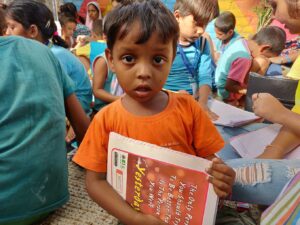Introduction
The relationship between culture and education is profound and multifaceted. Culture shapes educational systems, influences teaching and learning practices, and plays a crucial role in the development of individuals and societies. This note explores the intersection of culture and education, highlighting how cultural factors impact educational outcomes, curriculum design, and pedagogical approaches.

Cultural Influence on Educational Systems
- Curriculum Development: Cultural values, beliefs, and priorities influence the design and content of educational curricula. Different cultures prioritize various subjects, skills, and knowledge areas based on their social, economic, and historical contexts.
- Teaching Methods: Cultural norms and traditions shape teaching methods and instructional approaches. For example, cultures that emphasize collaboration and group work may favor cooperative learning strategies, while those that value individual achievement may focus on independent study.
- Educational Philosophy: Cultural perspectives inform educational philosophies and theories. For instance, Eastern cultures may emphasize holistic approaches to learning, integrating mind, body, and spirit, while Western cultures often prioritize critical thinking and analytical skills.
Cultural Diversity in Education
- Diverse Student Populations: Schools often serve students from diverse cultural backgrounds, including different ethnicities, languages, and socio-economic statuses. Embracing cultural diversity in education promotes inclusivity and enriches learning experiences.
- Cultural Competence: Educators need cultural competence to effectively teach and support diverse student populations. Cultural competence involves understanding and respecting cultural differences, adapting teaching practices, and creating inclusive learning environments.
- Multicultural Education: Multicultural education aims to promote cultural awareness, appreciation, and understanding among students. It incorporates diverse perspectives and experiences into the curriculum, fostering empathy, respect, and global citizenship.
Culturally Responsive Pedagogy
- Cultural Relevance: Culturally responsive pedagogy acknowledges and incorporates students’ cultural backgrounds, experiences, and interests into teaching and learning. It recognizes that students learn best when content is relevant and meaningful to their lived experiences.
- Equity and Empowerment: Culturally responsive pedagogy promotes equity and empowerment by validating students’ cultural identities and providing opportunities for their voices to be heard. It fosters a sense of belonging and agency among diverse learners.
- Community Engagement: Culturally responsive pedagogy encourages collaboration with families, communities, and cultural organizations. It recognizes the importance of community partnerships in supporting students’ educational success and well-being.
Challenges and Opportunities
- Cultural Bias: Educational practices and materials may reflect cultural biases and assumptions, leading to inequities in learning outcomes. Addressing cultural bias requires critical reflection, inclusive curriculum design, and ongoing professional development.
- Language Barriers: Language differences can pose challenges for students from linguistically diverse backgrounds. Supporting language acquisition and providing English language learners with appropriate instructional resources are essential for their academic success.
- Cultural Appropriation: Educators must be mindful of avoiding cultural appropriation and stereotypes in the classroom. Respectful engagement with diverse cultures involves authentic representation, sensitivity, and ethical considerations.
Strategies for Promoting Cultural Integration in Education
- Diverse Representation: Incorporating diverse perspectives, voices, and contributions into educational materials and resources promotes cultural integration and inclusivity.
- Professional Development: Providing educators with training and resources on cultural competence, multicultural education, and culturally responsive pedagogy enhances their ability to meet the needs of diverse learners.
- Global Education Initiatives: Engaging in global education initiatives, such as cultural exchange programs, international collaborations, and cross-cultural partnerships, broadens students’ perspectives and fosters intercultural understanding.
- Community Involvement: Collaborating with families, communities, and cultural organizations strengthens cultural integration in education. Community involvement provides opportunities for students to connect learning to real-world experiences and resources.
Conclusion
Culture and education are intricately intertwined, shaping individuals, societies, and the world we inhabit. Recognizing the cultural dimensions of education is essential for promoting equity, diversity, and inclusion in learning environments. By embracing cultural diversity, fostering cultural competence, and integrating culturally responsive pedagogy, educators can create enriching educational experiences that empower all students to thrive in an interconnected global society. Culturally integrated education not only enhances academic achievement but also fosters empathy, respect, and mutual understanding across cultural boundaries.










